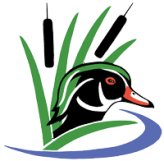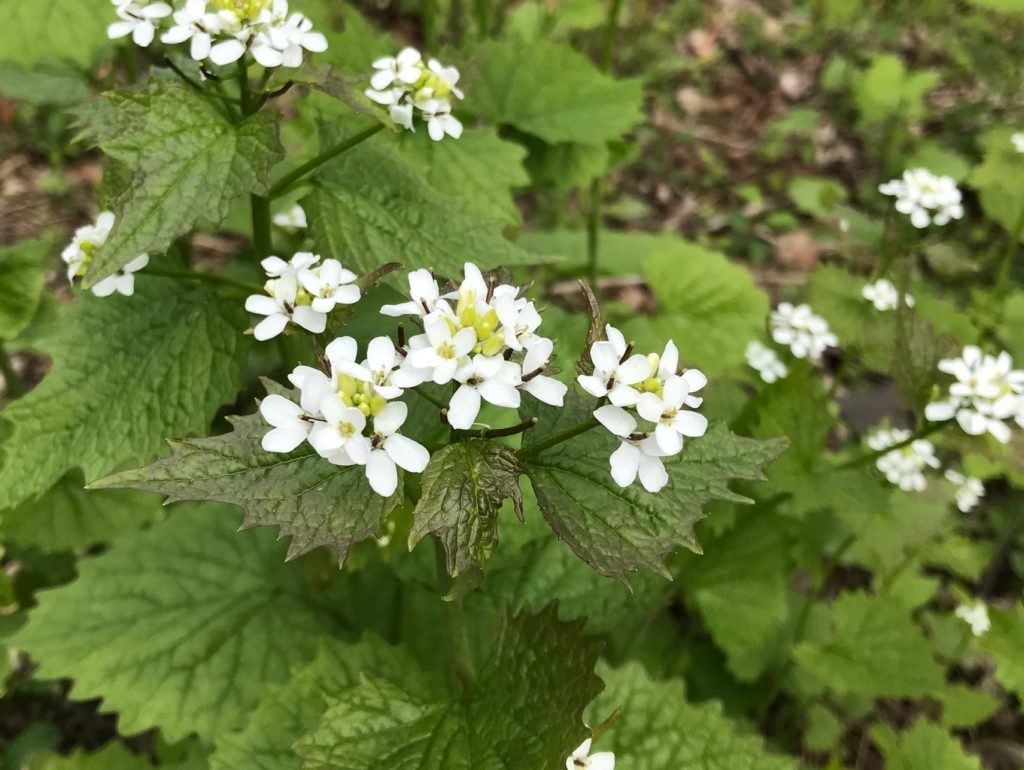
We all know that we should not pick wildflowers, much less, dig them up. But here’s an exception!
Garlic mustard.
This is a non-native, highly invasive herbaceous plant that is spreading rapidly in our woodlots, forests, and along wooded roadsides. It dominates in our forest understory, crowding out native species and reducing the diversity of all species.
Garlic mustard is in full bloom now and will continue blooming into June. It is easy to recognize with a small cluster of white flowers at the top, each with four petals. It has heart-shaped, toothed leaves and grows from 6 inches to 2 feet or more.
So, here’s your chance to get outside and improve the habitat. You can pull this plant by hand – roots and all. Then hang them upside down from a branch or lay them on rocks to prevent re-rooting.
Unfortunately, garlic mustard has a biennial life cycle. It takes two years to flower – and produce seeds. As with the control of all invasive species, persistence is important. Last year, the Friends Pervasive Invasive Species Control Team spent a work session pulling garlic mustard on the Nature Detective Trail. Here’s hoping we can get back soon to continue our work.
Note: While a nuisance in the environment, garlic mustard has long been used by cooks as a flavorful ingredient. An internet search for garlic mustard recipes will produce a variety of interesting, and perhaps tasty, options for the mitigation of this invasive plant.
Most of the year, many shrubs and understory trees can be difficult to identify, but when they bloom in the spring it’s really an easy call. Look for these three native shrubs, all of which are in full bloom right now. All are great additions to the home landscape.
Shadbush (Amelanchier canadensis)
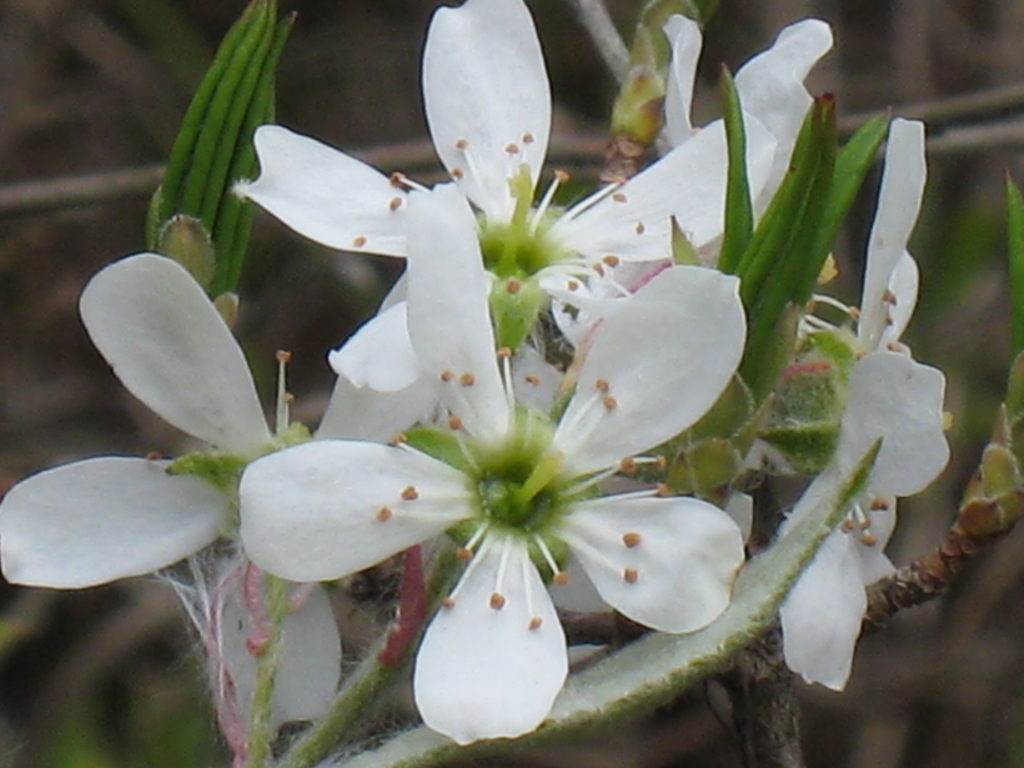
If you are walking through the woodlands these days, you may catch sight of soft, white clouds of blooms among the gray trees. These are the showy white flower of the shadbush, a small understory tree.
The flowers give way to dark-blue berries which ripen in June. These make a delicious fruit pie if you can beat the birds to them.
In autumn, the leaves turn a brilliant red, orange and yellow.
The shadbush is easy to grow in average, well-drained soil in full sun to part shade. There are no serious insect or disease problems and there are many cultivars.
Pussy willow (Salix discolor)
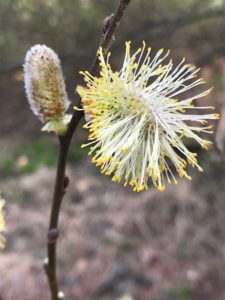
One of the earliest heralds of spring with the familiar silvery-gray furry catkins appearing weeks before the leaves.
This species is dioecious – male and female flowers are produced on separate plants.
The early March catkins provide important food sources for native bees and other pollinators, which in turn creates an insect buffet for songbirds.
The Viceroy and the Mourning Cloak are two species of butterflies which use the pussy willow as a host plant.
Pussy willow can be used in the home landscape in a moist location or rain garden. It’s easy to propagate from cuttings which can be inserted in moist soil in summer. There are many colorful cultivars available.
Spicebush (Lindera benzoin)
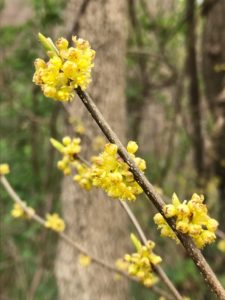
At this time of year, a soft yellow bloom in the woods is likely to be spicebush. The dense clusters of tiny, pale yellow flowers bloom along the stems appearing before the leaves.
This shrub is also dioecious (now you know what that means!). The male flowers are larger and showier than the female ones. However only the female plants give way to the bright red fruit which matures in the fall – an attractive food source for birds. So you need both!
The leaves and stems are fragrant (smelling like Allspice), giving the plant its name.
Spicebush provides year-round interest in the landscape. Early spring blooms, summer butterflies, and bring yellow foliage in fall along with red fruit. It is pest and disease free and easy to grow in average, well-drained soils.
The Eastern Tiger Swallowtail and the Spicebush Swallowtail butterflies use spicebush as a host plant.
It’s fun to read the many stories and folktales which have been associated with this tree for hundreds of years – check it out online.
Video courtesy of Main Audubon Media
During mating season, males of many species engage in ritualistic courtship behaviors. We find numerous examples in this area. The throaty croak of a bullfrog, the rhythmic flashing of a firefly or the purchase of a Porsche 911 by a middle aged divorcee. These all serve the same purpose; to demonstrate the male’s desirability to the female of the species. From an evolutionary standpoint, this allows the female to select to most desirable father for her offspring. And few creatures work harder at this than the male American woodcock.
Early spring at Great Swamp National Wildlife Refuge offers a unique opportunity to observe the courtship rituals of this somewhat cartoonish looking bird. Typically at dawn or dusk, the male woodcock finds a favorable spot in a brushy location and begins with a series of ground calls that have been described as a short, buzzy “Peent”. He then launches himself up to 300 feet into the air and rapidly descends in a zig-zag pattern while emitting a soft chirping song amid a flutter of wings. Should this attract a female, he then struts around with wings outstretched to further demonstrate his connubial worthiness.
Having said this, it’s worth noting that the male woodcock is not exactly a model family man. He is likely to mate with several females during the season, and does not participate in nesting, incubating the eggs or caring for the young. Perhaps like that fellow with the Porsche.

Although it is still winter, the days are getting noticeably longer, the chickadee starts singing its spring mating song, and the first wildflower of the year – skunk cabbage – is in full bloom. How is this possible when the ground is frozen and the threat of snow still very real.
Skunk cabbage has a remarkable ability to produce its own heat which allows it to melt the snow around it and bloom even when the ground is frozen. But what pollinates a flower in winter? The skunk cabbage has a couple of tricks. The flowers emit the smell of rotting meat – which is like perfume to flies and carrion beetles. But the hood also serves as a little warming hut where insects can heat up their flight muscles. The plant not only produces heat, it regulates the temperature as well, keeping the air inside the hood at a comfortable 68 degrees regardless of the outside temperature.
Do not try to eat this plant! It contains calcium oxalate crystals, which will cause a severe burning sensation in your mouth, throat and esophagus. Some animals, however, seem immune to these crystals. For the black bear, just coming out of hibernation – and ravenous – skunk cabbage is an important food source.
You can see the brown/green hoods poking up through the wetlands along the Bockoven Trail near the vernal pool and also along the boardwalks at the Wildlife Observation Center, but you have to look closely. By April, when the showy spring wildflowers are appearing, the flower of the skunk cabbage will have withered. But its huge, bright green, cabbage-like leaves carpet the wetlands. They are visible well into the summer and are often the first time that many people even notice the skunk cabbage plant.
This is a wonderful time of year to get outside and start looking, and listening, for early signs of Spring. Hope to see you around the swamp.
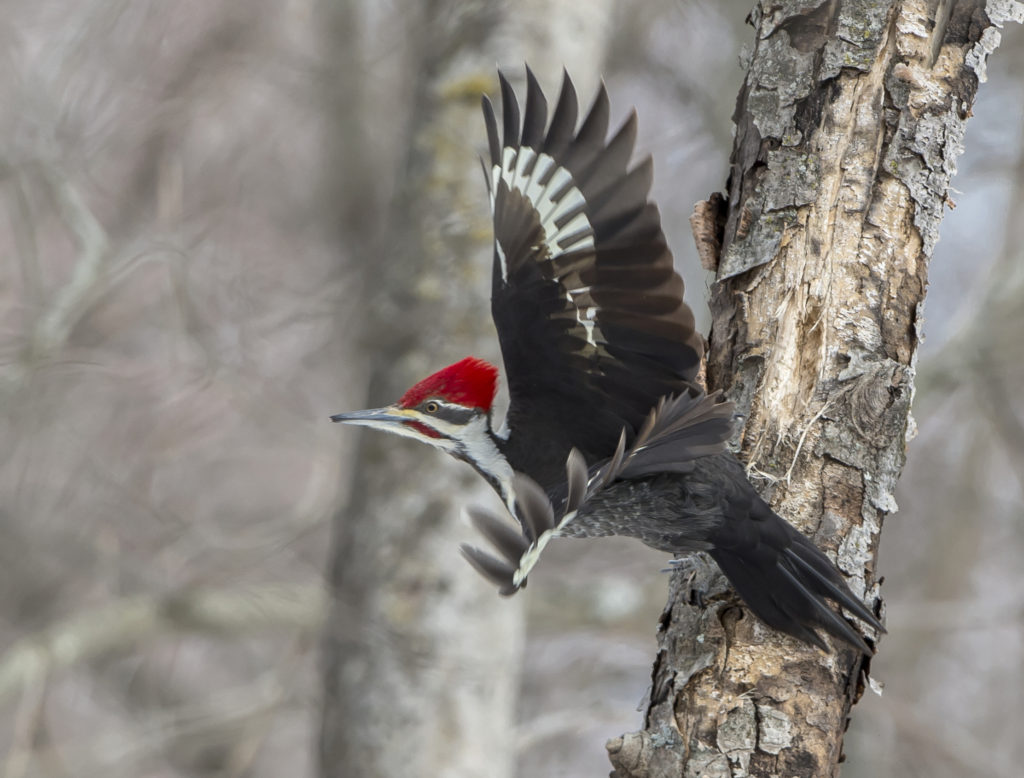
Photo: Chuck Hantis
February 14 – 16, 2020, 10:00 am to 4:00 pm every day at the Helen C. Fenske Visitor Center
Join us for three days of birding fun. Help volunteers count the birds at the feeders from inside the Visitor Center. Daily bird counts will be reported to the Cornell Lab of Ornithology to aid in citizen-science research on bird populations and distribution. Can’t tell a house finch from a goldfinch? No problem. Our volunteers will teach you how to identify the common feeder birds.
There will also be some fun bird-related activities for kids and adults. Make a suet bird feeder to take home, play bird bingo for a prize, paint your own tree cookie ornament, try your skills at our (indoor) Birding “Find It” game.
Great Backyard Bird Count Schedule
Every Day – Indoors
- 10:00 am – 4:00 pm – Count the birds! Volunteers will be on hand to help identify and count the species. It’s fun and easy!
- Bird Bingo for kids – play our game and win a prize!
- Make a pine cone bird feeder to take home.
- What’s Your Bird Name?
- Paint your own tree cookie ornament.
- Birding “Find It” game.
Special Events for Saturday, February 15
1:00 – 2:00 pm: Learn to identify common winter birds. Indoor presentation by naturalist Dorothy Smullen.
2:00 – 3:30 pm: Guided bird walk along Pleasant Plains Road to count the birds. Bring binoculars or borrow ours. Dress warmly.
This event is free and registration is not required. Join us!
The Great Backyard Bird Count is an international citizen science event launched in 1998 by the Cornell Lab of Ornithology and National Audubon Society. Now more than 160,000 people of all ages from around the world join the count each February to create an annual snapshot of bird distribution and abundance worldwide. This data is critical in wild bird research to find ways to protect these wild creatures for future generations.
Helen C. Fenske Visitor Center
32 Pleasant Plains Road, Harding Township, NJ
973-425-9510

Photo: Robert Stapperfenne
Thursdays, 10:30 a.m., Helen C. Fenske Visitor Center
We all know that exercise is good for your health, and research shows that it’s even better if you do it outdoors. It’s official! Spending time outside can improve your physical, mental, and emotional wellbeing. But winter often makes it harder.
Friends are here to help with weekly Winter Walks. Join Friends President Steve Herdman every Thursday beginning January 2 at 10:30 a.m. for a brisk walk on Pleasant Plains Road from the Visitor Center to the Bluebird Parking Lot – a round trip distance of about 2.5 miles.
Walk at your own pace, walk as far as you want, bring friends, your dog, your binoculars. Enjoy some exercise, fresh air, and good company. Join us. Let’s get outside!
Call the Visitor Center at 973-425-9510 for announcements of weather cancellations.
